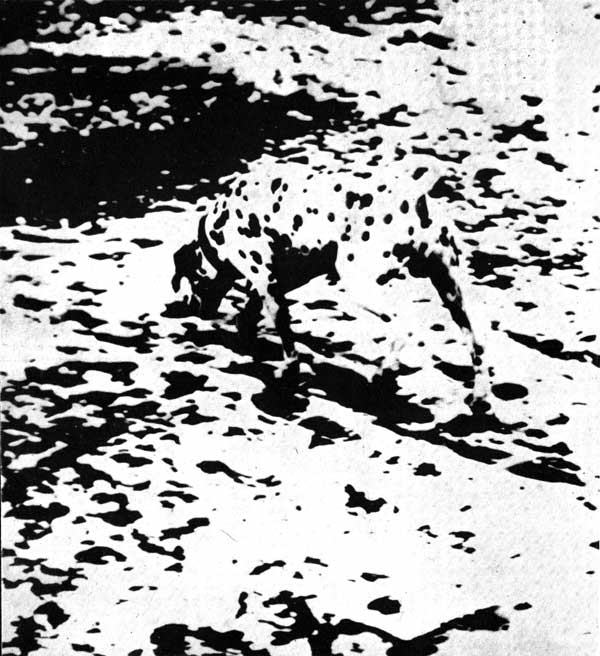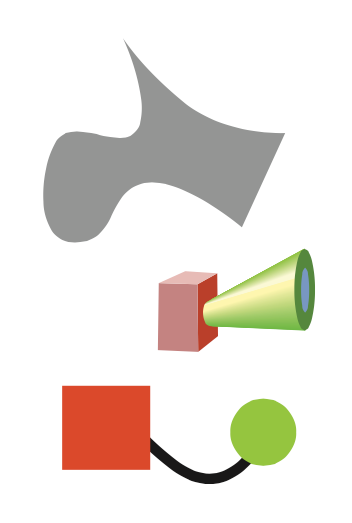
DSCI 554 lecture 10
Patterns, memory, visual encodings, semiology and Gestalt.
Dr. Luciano Nocera

Outline
- Pattern recognition, memory
- Gestalt
- Marks and encodings
Pattern recognition
Information from a stimulus ⟺ information from memory
- Subconscious
- Involves the
What
visual pathway - Top-down and bottom-up processing

Apophenia
- Perception of images or sounds in random stimuli
- Priming increases likelihood of seeing the pattern
- Likely evolutionary process from Type I (false positive) and Type II (false negatives) errors

Priming
Effect in which exposure to one stimulus influences a response to a later stimulus. Works on VLTM.

Visual pathways
- Where and what pathways of the two stream hypothesis
- Works without visual input
- Visual aids needed for visual thinking due to limited memory resources and interactions due to limited attention
Where / Dorsal
relative object location for motor tasks
relative object location for motor tasks
What / Ventral
object identification and recognition
object identification and recognition
Visual cortex & features processed
Visual cortex areas V1, V2, V3, V4, V5/MT (middle temporal))

Simple features are detected in earlier visual areas, large patterns and shapes in higher visual areas

Visual cortex & information
| Areas | Features processed | Example | |
|---|---|---|---|
| Lower visual cortex | V1, V2 | Simpler features | V1 neurons may fire to any vertical stimulus† |
| Higher visual cortex | V4, MT, and IT | Complex patterns | IT neurons may fire only to a specific face‡ |
| Lower visual cortex | Higher visual cortex | |
|---|---|---|
| Information | Low | High |
| Localization | High | Low |
| Specificity | Low† | High‡ |
| Experience | Universal | Individual |
V1 Neuronal tuning
- Single V1 neurons are generally tuned to a particular characteristic
- Results from convergence (group of cells form a receptive field for one neuron)

Lower visual cortex
- Typically takes $\sim$ 40ms (preattentive*)
- Strong tuning to orientation, spatial frequency and color
-
Extremely sensitive tuning for horizontal and vertical lines

- Feature hierarchy, e.g., corners generate more powerful responses than edges

Higher visual cortex
- ≥ 100ms
- Increased sensitivity to more global organization of the scene
- Tuning to groups of patterns, motion patterns of large patterns
- Specialized regions extract and represent generalized object structure, e.g., generalized contours are easily understood in sketches

Ware, Colin, Visual queries: The foundation of visual thinking, 2005. - Tuning to motion patterns of large patterns
Likely adaptation to tracking camouflaged objects.
Apprehendable chunk
Apprehendable chunks are:
- Learnable composite pattern
- Unlearned patterns that can be apprehended in one fixation
- Consist of about three components

Selective attentional tuning
Groups of patterns are robust to distortions
Neurons in higher visual cortex respond strongly despite distortions



Sketches
- Easily understood complex patterns
- Require less work to understand than full-color, textured images
Icons & spatial metaphors

Isotype* [Otto & Marie Neurath - 1935]

of qualitative and quantitative information via easily interpretable icons

Visual Memory
| ← Visual Persistance | Information Persistance → |
|---|
| Iconic Memory | Visual Short-term Memory (VSTM) | Visual Long-term Memory (VLTM) |
|---|---|---|
| Unlimited capacity | Limited capacity | Large capacity |
| Retention: $\leq 1s$ | Retention: $\leq 30s$ | Retention: indefinite |
|
|
|
Attentional bottleneck
Result of limited VSTM capacity

Miller's law
The Magical Number Seven, Plus or Minus Two
- Actual limit depends on the type information:
- 5-9 items in a 1-D information judgment task [Miller, 1956*]
- 4-5 items with characters [Sperling, 1960]
- 3-4 items with basic visual features & interference task [Luck & Vogel, 1997]

Outline
- Pattern recognition, memory
- Gestalt
- Marks and encodings
Gestalt theory of perception [1890]
- An organized whole that is perceived as more than the sum of its parts
- Gestalt means shape in German
- Psychology theory to understand the design implications of how we perceive patterns

Gestalt principles
Emergence
|
Reification
|
Multi-stability
|
Invariance
|
Gestalt laws
Pithiness (Prägnanz)
|
Figure and ground
|
Parallelism
|
|
Symmetry $[\ \ \ \ ]\ \ \ \{\ \ \ \ \}$ |
Focal points
|
Past experience
|
Gestalt laws of grouping
|
Proximity |
Similarity |
Closure |
Continuity
|
Common fate
|
Connection |
Common region
|
|

B: focal point, similarity, proximity
C: principle of reification, closure
D: principle of multi-stability, figure and ground
E: principle of invariance, proximity, similarity
F: principle of reification, closure
H: similarity, proximity
I: principle of reification, closure
J: principle of multi-stability
K: similarity, proximity
L: common region, proximity, continuity
Outline
- Pattern recognition, memory
- Gestalt
- Marks and encodings
Semiology of Graphics [Bertin 1967]

- Visual language is a sign language
- Sender encodes information in signs, receiver decodes information from signs
- Semiotics (semiology) is the study of signs and symbols and their use or interpretation
Marks (visual variables) and channels (encodings)
Accuracy of perceptual tasks [McKinley 1986]

Mackinlay, J., Automating the design of graphical presentations of relational information. ACM Transactions On Graphics, 1986.
Accuracy of perceptual tasks by data type [McKinley 1986]

Mackinlay, J., Automating the design of graphical presentations of relational information. ACM Transactions On Graphics, 1986.





